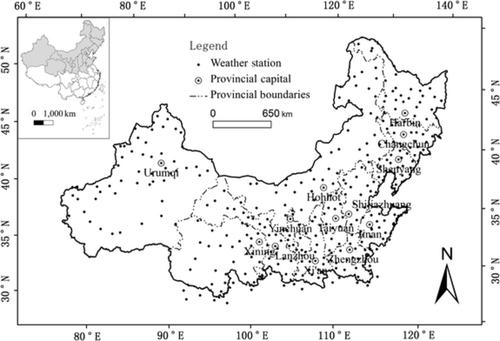当前位置:
X-MOL 学术
›
Meteorol. Appl.
›
论文详情
Our official English website, www.x-mol.net, welcomes your feedback! (Note: you will need to create a separate account there.)
Responses of abrupt temperature changes/warming hiatuses to changes in their influencing factors: A case study of northern China
Meteorological Applications ( IF 2.7 ) Pub Date : 2020-07-19 , DOI: 10.1002/met.1937 Longteng Liang 1 , Long Ma 1 , Qi Feng 2 , Tingxi Liu 1 , Bolin Sun 1 , Ying Zhou 1
Meteorological Applications ( IF 2.7 ) Pub Date : 2020-07-19 , DOI: 10.1002/met.1937 Longteng Liang 1 , Long Ma 1 , Qi Feng 2 , Tingxi Liu 1 , Bolin Sun 1 , Ying Zhou 1
Affiliation

|
Determining the response of abrupt temperature changes/warming hiatuses to changes in their influencing factors can provide a reference for investigating their mechanism. The present study, using the Mann–Kendall test, based on data (including average minimum temperature (Tmin), average temperature (Tave) and average maximum temperature (Tmax)) recorded at 357 meteorological stations in northern China and its surrounding regions as well as large‐spatial‐scale data (e.g. Atlantic multidecadal oscillation (AMO), global radiative forcing of CO2 (RFCO2) and radiative forcing of annual greenhouse gases (RFAGG)) for the period 1951–2016, the characteristics of abrupt temperature changes/warming hiatuses and their response to their influencing factors were qualitatively and quantitatively determined. The following results were obtained. Overall, from the late 1970s to the 1990s, as the RFAGG continuously increased, the Pacific decadal oscillation (PDO) remained in a positive phase, the AMO and total solar radiation (SR) continuously increased, the multivariate El Niño southern oscillation (ENSO) index (MEI) changed abruptly, the wind speed (WS), atmospheric pressure (AP) and relative humidity (RH) in each zone continuously decreased/increased, their trends changing subsequently, and abrupt changes in the three temperature metrics (i.e. the Tmin, Tave and Tmax) occurred in each zone during the period 1977–2004. Similarly, in the 1990s, particularly after 1998, as the increase in the AMO slowed, the PDO was in either a positive phase but exhibited a decreasing trend or a negative phase, the MEI and SR decreased, the WS, AP and RH decreased/increased, with subsequent changes in trends, and warming hiatuses occurred. The sensitivities of the responses of the Tmin to changes in the three types of influencing factors were the highest, followed by those of the Tave and Tmax. The effects of various influencing factors on the three kinds of temperature change and warming hiatus have strong spatial and temporal differences. As a result, there was a strong spatial difference in the year of the abrupt temperature change and the warming hiatus.
更新日期:2020-07-19


























 京公网安备 11010802027423号
京公网安备 11010802027423号